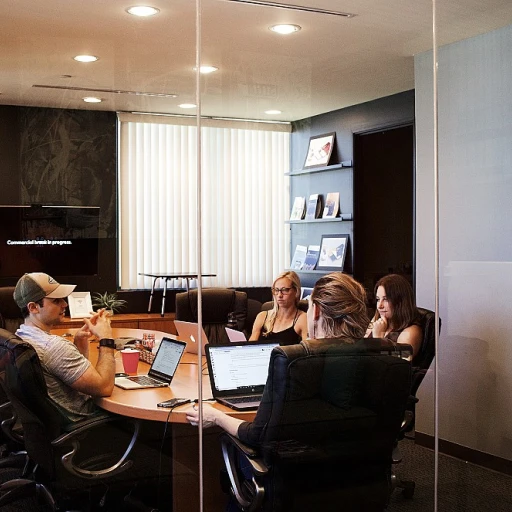Understanding Ageism in UK Workplaces
Defining Age Discrimination and Its Presence in the Workplace
In the United Kingdom, the issue of age discrimination in the workplace is a topic that continues to gain attention. Ageism, or discrimination based on age, can affect both older employees approaching retirement and younger workers trying to establish their careers. This bias impacts workers and can significantly influence their employment experiences.
Age-based prejudice occurs when employers or employees make assumptions about a person's capabilities solely, based on their age group. This can manifest in various aspects of work life including, recruitment, promotion opportunities, and daily interactions among colleagues.
Older workers might confront stereotypes that they are less adaptable or resistant to new technology, whereas younger employees may face assumptions of inexperience or lack of commitment.
While ageism can take many forms, such as derogatory jokes or biased decision-making, it's crucial for workplaces to be aware of these behaviours and their effects on the team dynamics. By understanding the roots of age prejudice better, companies can address these issues head-on, ensuring employees of all ages have equal opportunities to thrive professionally.
For insights into how age bias can materialize at work, review these
discrimination examples that shed light on age-related challenges that employees face in UK companies.
Common Examples of Age Bias
Identifying Instances of Bias in the Workplace
Age discrimination can manifest in several subtle and overt ways within the workplace. Recognising these instances is crucial for both employees and employers aiming to foster a more inclusive environment.
- Hiring Practices: Employers may exhibit a preference for younger workers, assuming older candidates lack the necessary technology skills or adaptability. This form of ageism in the hiring process overlooks the vast experience older employees bring to the table.
- Promotion and Advancement: A common example of age-based discrimination occurs when younger employees are promoted over more experienced, older workers. Employers might mistakenly believe that younger employees have a longer potential tenure with the company, neglecting the loyalty and dedication older employees have demonstrated over the years.
- Stereotyping and Assumptions: Stereotypes, such as the assumption that older workers are less innovative or resistant to change, contribute to age discrimination. This attitude not only affects the morale of older workers but also influences the culture of the workplace, impacting productivity and employee engagement.
- Retirement Pressure: Older employees sometimes face pressure to retire before they're ready, which can arise from misconceptions that make them seem near the end of their productive employment phase. This not only affects their morale but also their financial security, leading to broader implications on their well-being.
Understanding these challenges is critical in addressing ageism in the workplace. Fostering an environment where all age groups feel valued is beneficial for everyone involved. For more insights on enhancing workplace efficiency amid these challenges, consider exploring
enhancing workplace efficiency with a communication framework. This can aid in bridging gaps between different age groups and building a more cohesive work environment.
Impact on Employee Morale and Productivity
The Ripple Effect on Staff Well-being and Output
Age discrimination in the workplace can significantly affect the morale and productivity of employees. When older workers face bias because of their age, it alters the dynamics within a team, often making the environment less inclusive. This, in turn, negatively impacts employee morale.
Employees, irrespective of their age group, thrive in a supportive and respectful environment. Age-based discrimination can lead to feelings of alienation among older employees, diminishing their enthusiasm and engagement with their work. For instance, when job roles or promotions are implicitly or explicitly biased toward younger employees, older workers may feel undervalued, affecting their confidence and output.
Furthermore, younger workers can also be influenced by the ageist attitudes of their employers, potentially adopting similar biases or feeling undue pressure to outperform their more experienced colleagues. This tension can create an unhealthy work environment, reducing overall productivity and collaboration across age groups.
In addition to the impact on individual workers, the overall team productivity suffers as well. When experienced elder employees face discrimination examples such as exclusion from key projects or decisions, employers risk losing invaluable expertise that could otherwise enhance project success and innovation.
For employers looking to foster an inclusive workplace, recognising these impacts is critical. Acknowledging the experience that older employees bring and providing equal opportunities for people of all ages will not only improve morale but also drive productivity and retention. For more insights on maintaining positive workplace standards, view our detailed post on
minimum height requirements to ensure a comfortable and safe working environment.
Legal Framework and Protections
{
Legal Safeguards Against Age Discrimination
The UK has established a robust legal framework to protect employees of all ages from age discrimination in the workplace. This ensures an equitable work environment where experience and longevity are valued alongside youthful innovation. Let us delve into the key elements that safeguard against ageism.
The key piece of legislation addressing age discrimination is the Equality Act 2010, which makes it unlawful to discriminate against employees based on age. Whether younger employees are being overlooked in favor of their older counterparts, or older employees are facing undue pressure to retire, the Act provides the necessary legal protections.
- Direct Discrimination: This occurs when an employee is treated less favorably due to their age group. For example, an employer might believe younger workers are not capable of handling managerial roles, thus automatically excluding them from promotions.
- Indirect Discrimination: Some seemingly neutral policies or practices may have a disproportionate impact on certain age groups. For instance, insisting on a lengthy apprenticeship period could disadvantage older employees with substantial experience already.
- Harassment: Harassment based on age is also prohibited. This can manifest in various forms, such as making derogatory comments about a person's age, mocking retirement decisions, or creating a hostile work environment for employees of a certain age.
- Victimisation: Employees should not suffer negative consequences for filing an age discrimination complaint or supporting another employee's complaint.
Furthermore, the Default Retirement Age, which once allowed employers to compulsorily retire older workers, was abolished in 2011. This means that workers can choose to work past the traditional retirement age if they desire and are able.
Understandably, navigating employment law is complex, and employers must remain vigilant to avoid inadvertent violations. By proactively implementing age-inclusive policies and providing ongoing training, companies can mitigate risks associated with age bias. Embracing these protections not only aligns with legal requirements but fosters an inclusive and diverse workplace, ultimately benefiting all employees, regardless of their age.
Strategies for Combating Ageism
Implementing Policies and Practices
To tackle age discrimination effectively, it is crucial for employers to implement robust policies and practices. Employers should develop clear anti-discrimination policies that address ageism specifically, ensuring compliance with employment laws and fostering an equitable workplace for all age groups. Regularly reviewing these policies can help in identifying areas that need improvement.
Regular Training and Awareness
Educating employees about the negative impacts of age discrimination is essential in creating awareness. Employers should conduct regular training sessions focused on inclusivity and diversity. Such programs can help illustrate numerous examples of ageism and foster understanding and respect amongst different age demographics within the workplace.
Encouraging Diverse Teams
Diversity in teams, including a mix of younger employees and older workers, can offer numerous benefits. Employers should encourage the formation of diverse teams to leverage different perspectives, skills, and experiences. This approach not only helps in reducing age discrimination but also promotes a collaborative environment where every employee, regardless of age, feels valued.
Adapting Recruitment and Promotion Processes
Unconscious biases in recruitment and promotion processes can often lead to age discrimination. Employers should adapt these processes by setting clear, objective criteria for selection and advancement. Emphasizing skills and experience over age can help minimize biases, ensuring all employees have equal opportunities to succeed and advance in their careers.
Providing Flexible Work Arrangements
Offering flexible working arrangements can be beneficial for employees of all ages. Older employees, for instance, may appreciate the ability to work part-time as they near retirement, while younger employees might benefit from work-life balance adjustments. Tailoring work options to meet the diverse needs of your workforce can help create a supportive and inclusive workplace.
Through these strategies, employers can effectively combat age discrimination in the workplace. By fostering a culture that values diversity and inclusivity, organizations can enhance employee morale, bolster productivity, and create an environment where employees of all ages can thrive.
Fostering Workplace Unity Across Age Groups
Creating an inclusive environment that bridges the gap between ages is crucial for employers aiming to combat ageism within their organisations. The workplace should be a space where both younger and older employees feel valued and understood.
One effective approach is to encourage mentoring and knowledge sharing between different age groups. Older employees can offer invaluable insights and experience, while younger workers can introduce new skills and technologies. This exchange not only enriches cultures within the office but also fosters mutual respect.
Employers must also pay close attention to job roles and the allocation of responsibilities, ensuring they are not unintentionally biased toward a specific age group. It is beneficial to conduct regular training sessions focusing on diversity and inclusion to combat discrimination based on age, showcasing real-world examples of age bias and discrimination employment practices.
Offering flexible work arrangements and options suitable for all life stages can also contribute to reducing discrimination age issues. Tailoring guidelines around retirement age, while respecting individuals' preferences, further supports inclusiveness.
Finally, it is essential for employers to regularly assess workplace policies through surveys and feedback tools, ensuring they are aligned with anti-age discrimination laws and promoting a harmonious age-diverse environment. By focusing on these strategies, companies can effectively minimize ageism workplace challenges and foster a productive and diverse workforce.

